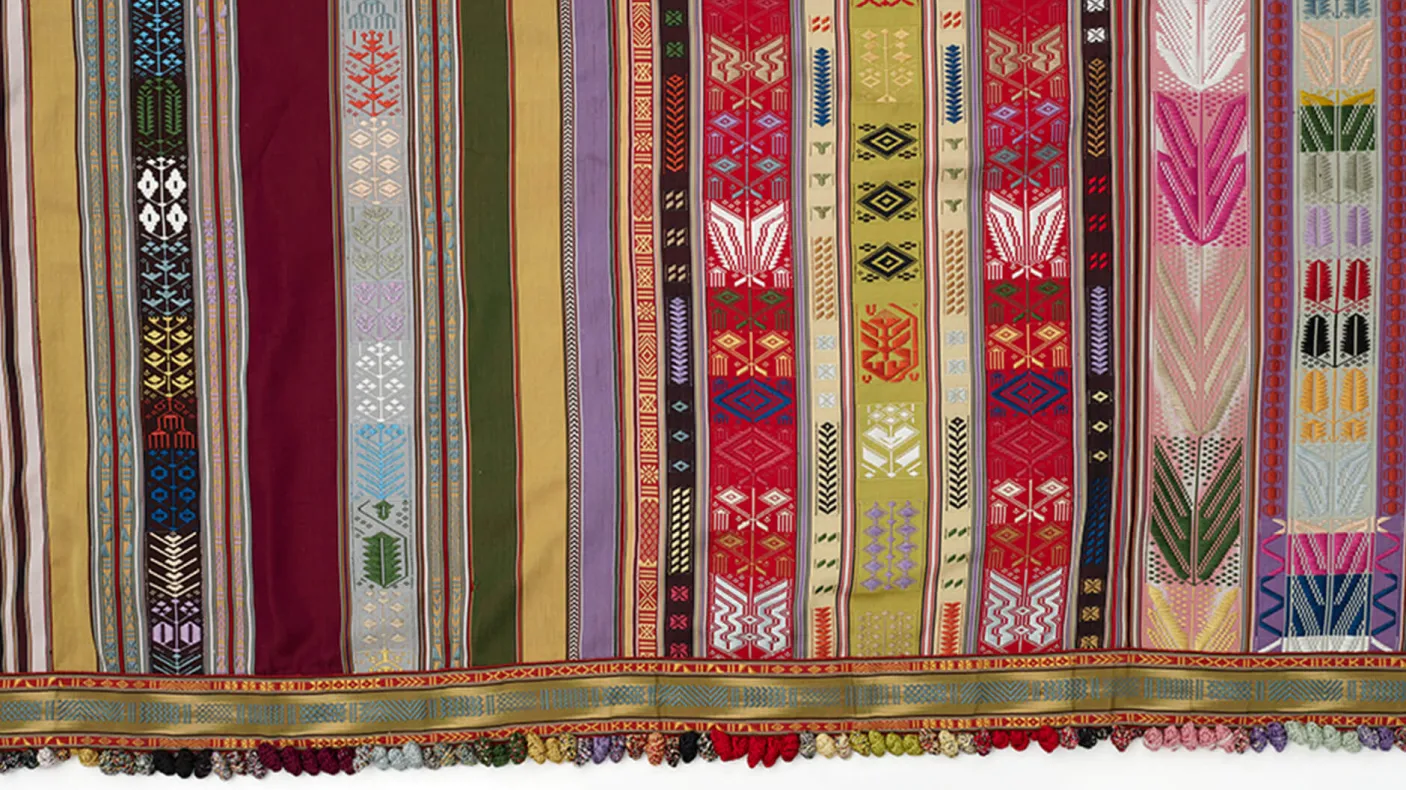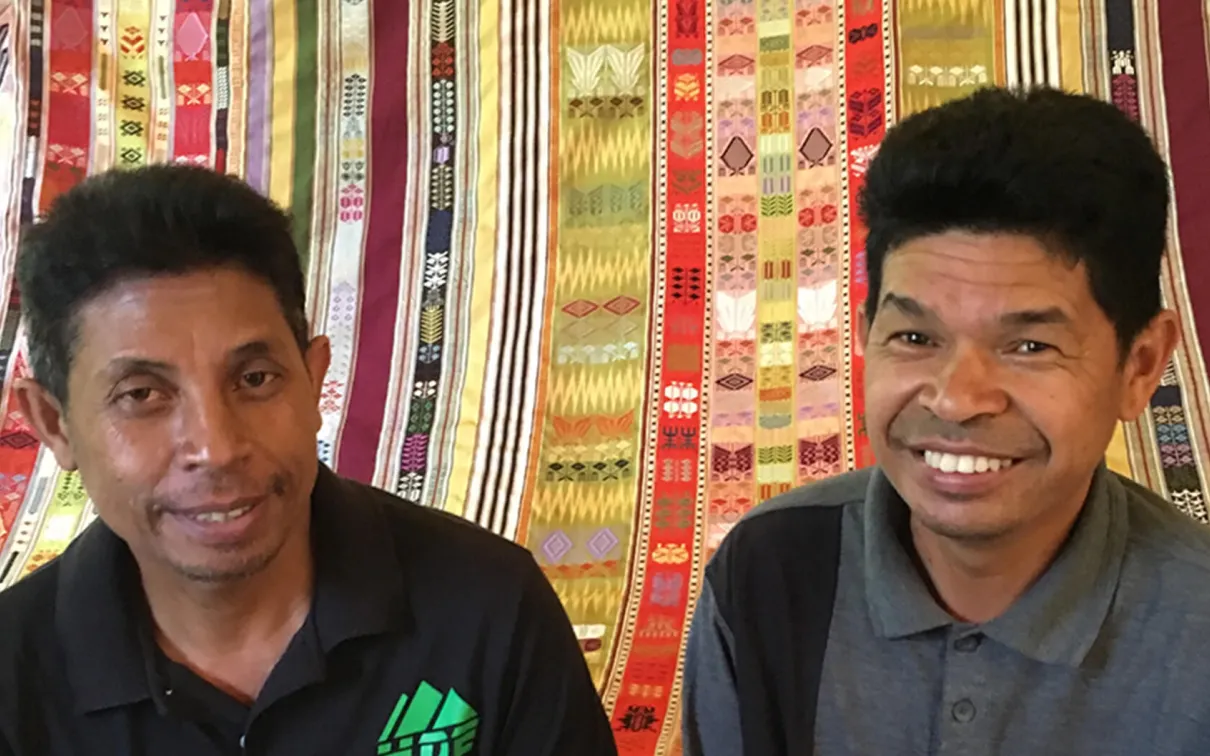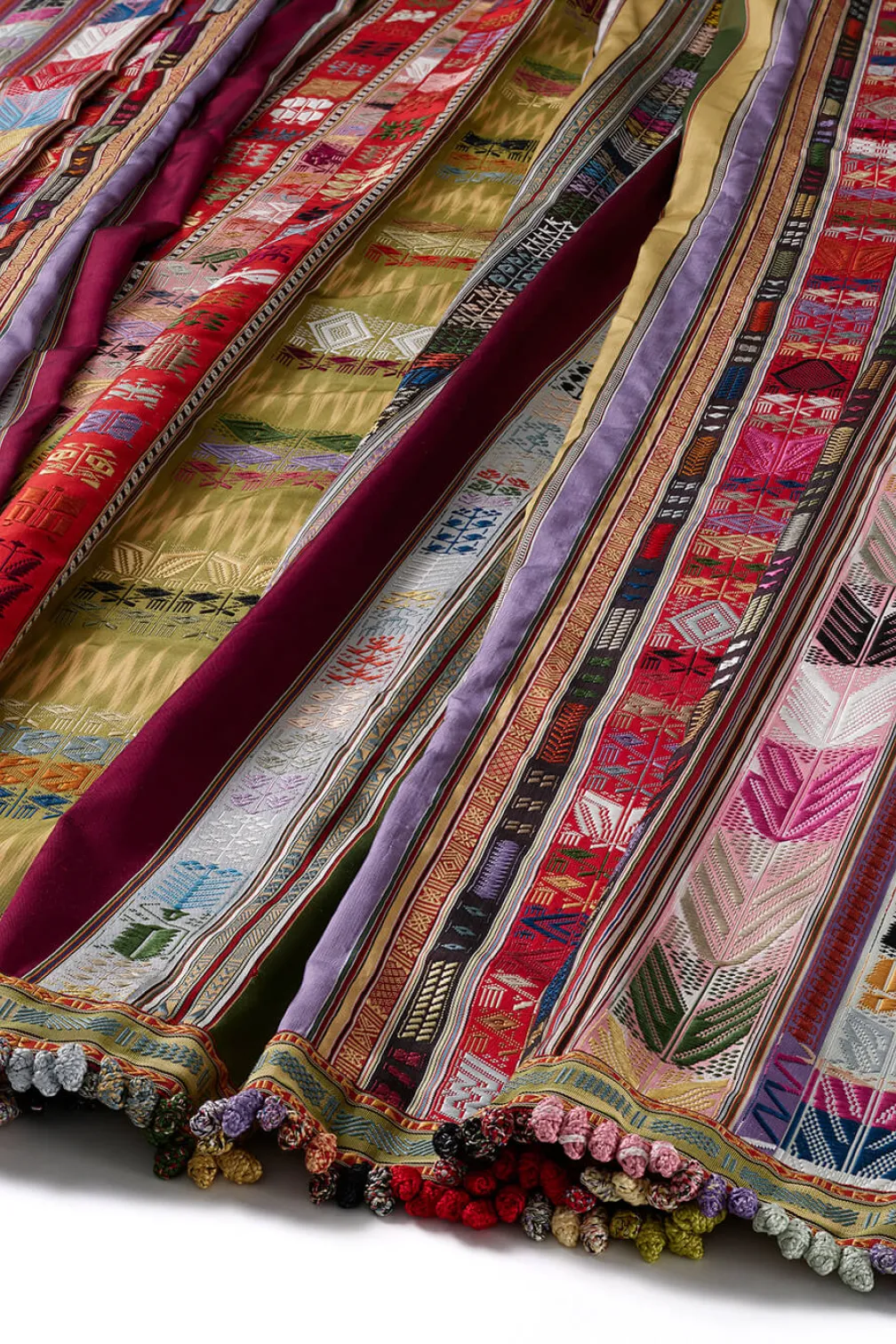Lamba Marevaka: Cloth of Dazzling Colour
The ROM acquires a contemporary silk mantle from Madagascar.
In this year of tribulations
In this year of tribulations comes a much-needed blaze of shimmering colour. This spring, the ROM’s Global Fashion & Textiles collection welcomed an important new acquisition: a contemporary handwoven silk mantle (akotifahana) from the Lamba Sarl studio of Madagascar.
For the past twenty-five years, the studio team has striven to recapture the grandeur of Madagascar’s historic silk weaving traditions. This oversized mantle (c. 2017–18), in 12 different glowing colours with subtle touches of ikat, represents the studio’s/team’s largest and most ambitious piece to date.
Lying east of Mozambique, the large island of Madagascar was settled thousands of years ago by peoples coming from both Indonesia and continental Africa. They blended weaving techniques from Africa and Asia to create brightly coloured and striped shoulder mantles and wrapper skirts from local cotton, raffia, tree bark-thread, wild silk, and plant dyes.
In the early nineteenth century, Madagascar’s weavers embraced a new imported fibre to create new styles: shiny reeled floss silk from the Chinese silkworm. Weavers living near the royal seat of Antananarivo dyed the silk in bright colours and wove it into raised patterns ranging from geometric shapes to plants and objects from daily life. Called akotifahana, these luminous silks of juxtaposed colours are often compared to stained glass. Rulers gifted the cloth to European dignitaries. By the late nineteenth century, however, large mantles fell from fashion in Antananarivo and associated weaving skills died out.
To recapture the former grandeur of akotifahana, in 1995 British art historian Simon Peers gathered together a group of master weavers. For fifteen years, the group Lamba Sarl, headed by Martin Rakotoarimanana and Daniel Rafidison, has sought inspiration in historic akotifahana to create contemporary original masterworks in new design configurations and colour palettes.
Lamba Sarl’s works
Lamba Sarl’s works have been featured at the Art Institute of Chicago, the British Museum, and the Smithsonian Institution, among others. In 2010, the group began a new adventure, weaving silk from the golden orb spider. One of their creations, a spider silk cape, was recently displayed at the ROM as part of the Spiders: Fear & Fascinationexhibition.
In 2017, after twenty-five years together, the retirement of several masterweavers loomed. The group thus turned to making their most ambitious akotifahana to date. For more than six months, four weavers and four seamstresses and passementerie specialists crafted nine individual panels, measuring an impressive 2.5 x 2.5 metres altogether. Special touches that harken to past traditions include tie-resist ikat flourishes and the intricately plaited and knotted fringe. The group appropriately named it Lamba Marevaka, meaning “cloth of dazzling colour”.
This acquisition was generously supported by the Suzanne Labarge Fund.
Gallery 1
This contemporary work
This contemporary work both complements the ROM’s existing historic examples of woven silks from Madagascar, and as importantly recognizes and supports living textile artists working in Madagascar today.
Sarah Fee
Sarah Fee is Senior Curator of Global Fashion & Textiles at ROM.









